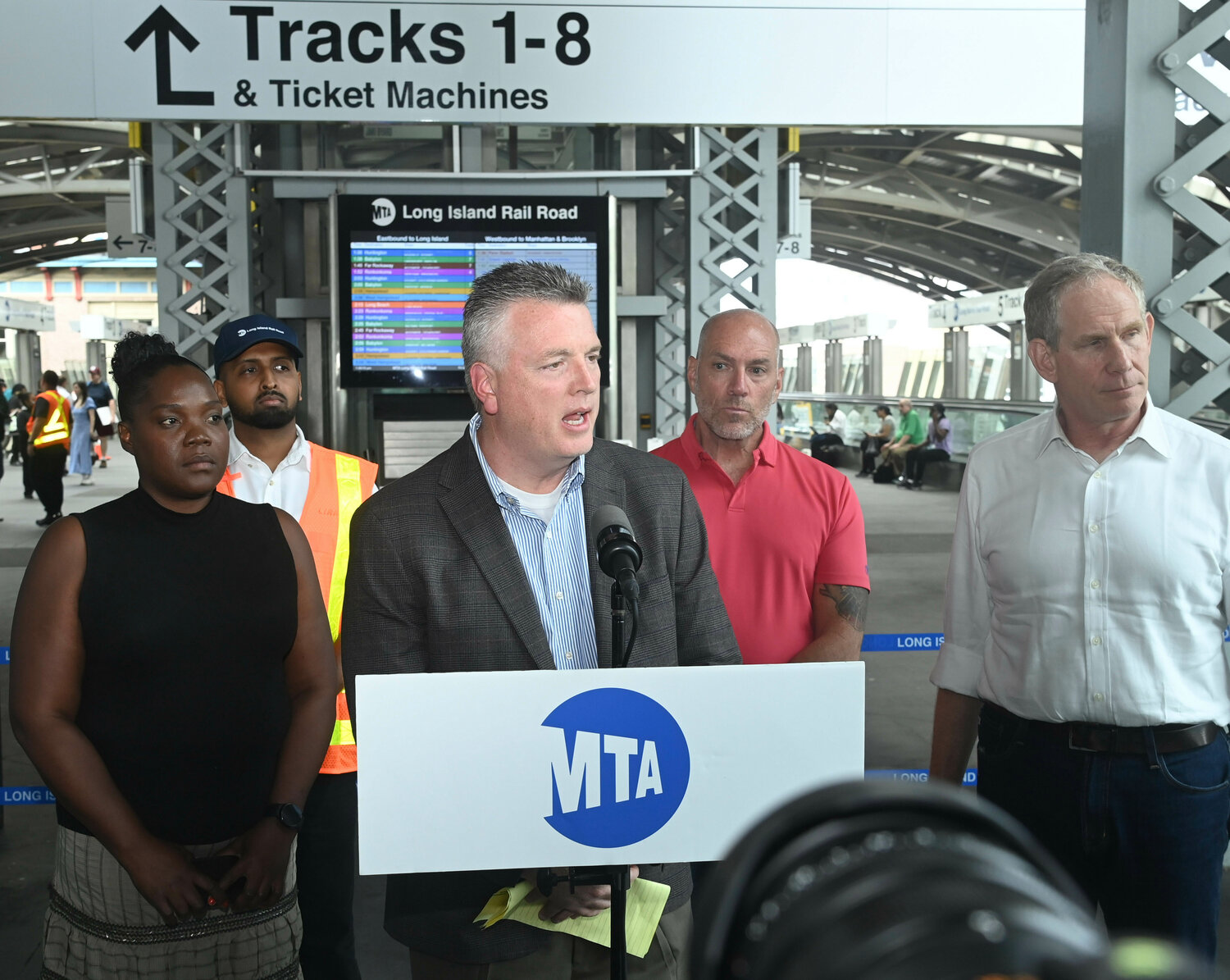Robert Free wants to be more than the Long Island Rail Road's temporary chief
One of his first jobs with the Metropolitan Transportation Authority was cleaning train stations, but Robert Free was destined to do so much more. Over the years, he continued to impress bosses, eventually rising to the MTA’s senior vice president of operations.
And now, the Port Jefferson resident is back at his roots at the helm of the Long Island Rail Road, taking over as acting president and allowing Catherine Rinaldi to return all her focus to the Metro-North line.
He’s never been closer to that ultimate career prize — but he’s not quite there yet.
Free is the railroad’s acting — but not yet permanent — president. No one has a lock on the position as the agency mulls over candidates, but MTA chief Janno Lieber says those minds could be made up by next March. And it’s quite likely they won’t have to change any nameplates or business cards when it happens.
“I think we have an obligation to go through a national search and to make a decision,” Lieber said. “We don’t hand people jobs of this importance without going through a process.”
For now, the future holder of that spot remains an open question — though Free promises to be a big contender. He has roughly less than six months in his current post to make a good impression — and he plans on using that time to win over the respect of commuters and his bosses.
“I would not take this position as acting if I did not want it full-time,” Free said. “I’ve invested a lot of my life here. It would be a fantastic way to finish my career.”
He principally aims to succeed where some observers believe Rinaldi has largely struggled: staying present and doubling down on his three core issues: “safety, reliability, and the customer experience.” Rinaldi lives in Westchester County, so local presence wasn’t as easy.
A large portion of Rinaldi’s 18-month tenure was spent in the recovery of two commuter railroads, the Long Island Rail Road and Metro-North, from the coronavirus pandemic —when ridership dropped to historic lows. She faced criticism from Long Island leaders who said her attention was too divided between the two railroads amid a turbulent time for the MTA.
Commuters also bemoaned deteriorating train stations and increasing delays, as well as the loss of a popular fare discount program and the uptick in the price of tickets as a consequence.
It all has contributed to a sense that LIRR leadership has been glaringly disconnected from commuters — an optic Free is striving to undo.
He plans to capitalize on his broad-brush appeal with union workers and commuters — having been both for years — while bringing an intimate engineer’s view to fixing systemwide challenges to reduce commuting headaches.
At the top of his to-do list is to ride the rails with MTA law enforcement to get a better sense of commuter’s safety needs, fine-tune the LIRR’s schedules to shorten waiting times, and upgrade and beautify train stations.
“We don’t just want to provide train service,” Free said. “We want to be a world-class service that our customers will be proud of. Safety, reliability and customer experience — these priorities go hand-in-hand. You can’t have an on-time railroad if you don’t have a safe railroad.
“And that will be on the forefront of what we do.”

 50.0°,
Overcast
50.0°,
Overcast 




